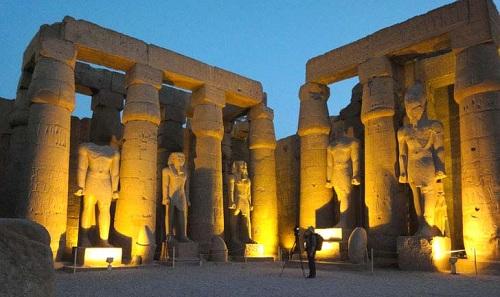Using AI to control energy for indoor agriculture
30 September 2024
Published online 27 February 2012
The Valley of the Kings; The Karnak Temple Complex and the Temple of Hatshepsut. Just three of the marvellous attractions of Luxor in Egypt, the site of the ancient city of Thebes, which have lured people from afar for millennia. Now, new 3D technology may offer virtual visitors the change to gaze at those ancient wonders without as much as a tourist bus in sight.
Researchers at King Abdullah University of Science and Technology (KAUST) and the University of California, San Diego (UCSD) have used new imaging technology to construct 3D models of these ancient wonders.

The teams employed CAVEcam photography: two cameras rigged to snap the shutters simultaneously, each taking 72 photographs for panoramic views of 360° vistas. Only three such systems have ever been built, one belongs to its designer, Dick Ainsworth, and the other two are at KAUST and USCD.
"There is no system other than the CAVEcam that can capture 3D images covering the complete sphere — 360 degrees by 180 degrees," says Ainsworth.
"The CAVEcam has two cameras sitting side by side which replicate both the distance and view of the human eye. So as a result you have a left and right eye perspective of photos taken," explains Adel Saad, systems administrator at KAUST's Visualisation Lab. The cameras reposition automatically at regular intervals for subsequent photographs to capture the entire scene, from sky to ground.
Software stitches simpler images together, but more complex scenes need to be stitched manually, taking from 12 hours up to a week. "The stitching process is automatic only in the most trivial sense. It is fairly easy to combine multiple images of a scene to create a single composite photograph. Creating matched stereo images that accurately represent the complete spherical view as seen from each eye, however, is complex. The entire stereo image must be created to accurately duplicate what our eyes see."
With KAUST boasting one of the most advanced imaging facilities in the world, the next step is to integrate sound and touch into the experience. The team envisions cyberarchaeology, whereby historic sites are preserved and made digitally available in special, 3D visualization facilities, such as those available in KAUST. "I can look at a 3D image of a piece of ceramics and feel the holes and little chips in it, without it actually being there," explains Saad. He expects such technological developments may be seen in as little as six months to a year.
It can also allow researchers from around the world to study artefacts without worrying about shipping them overseas or accidentally damaging or contaminating them.
Currently, the images and 3D visualization lab are only accessible to KAUST students, faculty and collaborating researchers. Saad hopes the 3D immersive images will be made available to the public in the near future.
doi:10.1038/nmiddleeast.2012.22
Stay connected: